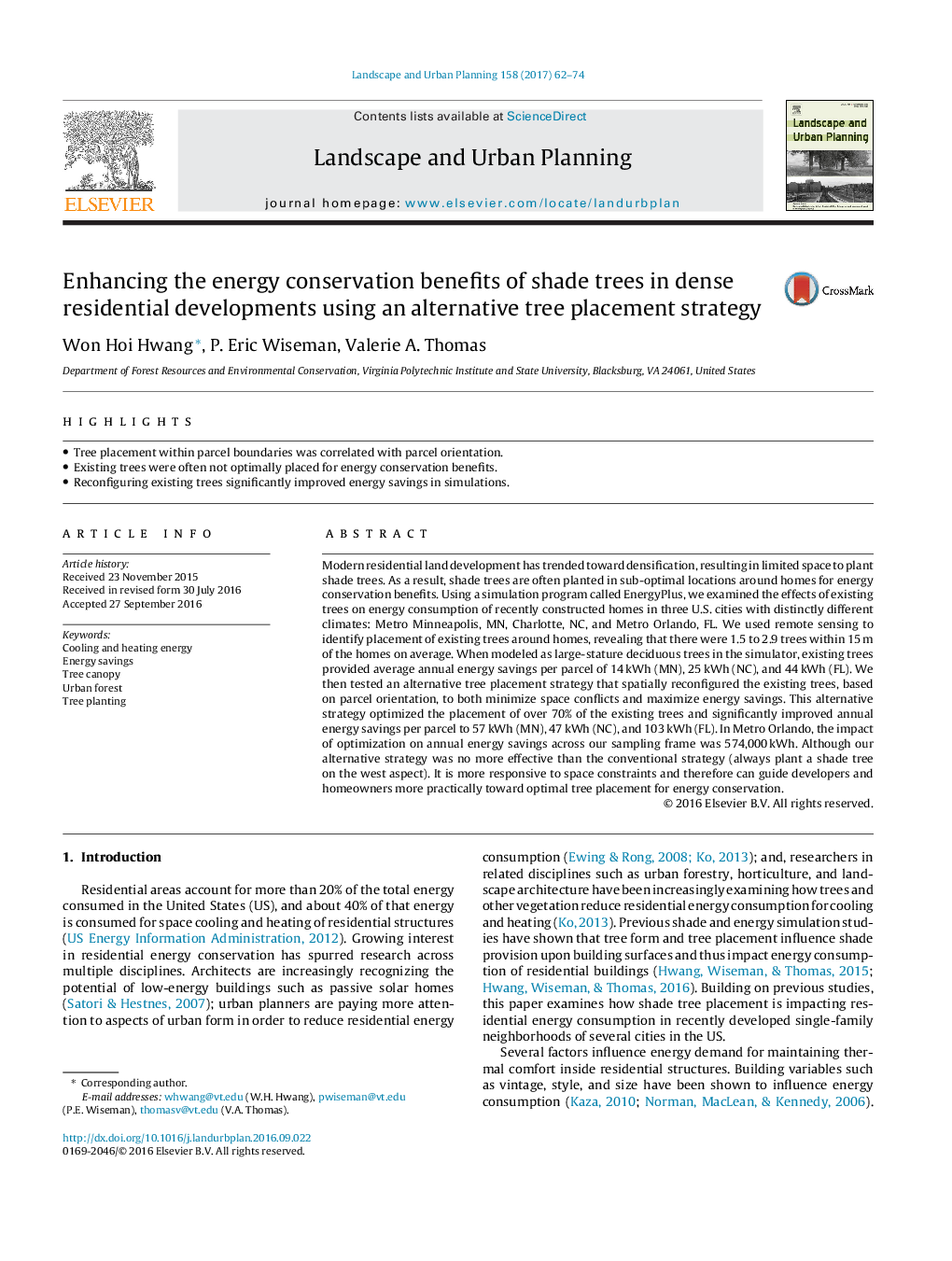| کد مقاله | کد نشریه | سال انتشار | مقاله انگلیسی | نسخه تمام متن |
|---|---|---|---|---|
| 5115112 | 1484600 | 2017 | 13 صفحه PDF | دانلود رایگان |
عنوان انگلیسی مقاله ISI
Enhancing the energy conservation benefits of shade trees in dense residential developments using an alternative tree placement strategy
ترجمه فارسی عنوان
افزایش مزایای صرفه جویی در انرژی درختان سایه در پیشرفت های مسکونی با استفاده از استراتژی جایگزین درختان
دانلود مقاله + سفارش ترجمه
دانلود مقاله ISI انگلیسی
رایگان برای ایرانیان
کلمات کلیدی
انرژی خنک کننده و حرارت دادن ذخیره انرژی، تپه درخت، جنگل شهری، کاشتن درخت،
موضوعات مرتبط
علوم زیستی و بیوفناوری
علوم کشاورزی و بیولوژیک
بوم شناسی، تکامل، رفتار و سامانه شناسی
چکیده انگلیسی
Modern residential land development has trended toward densification, resulting in limited space to plant shade trees. As a result, shade trees are often planted in sub-optimal locations around homes for energy conservation benefits. Using a simulation program called EnergyPlus, we examined the effects of existing trees on energy consumption of recently constructed homes in three U.S. cities with distinctly different climates: Metro Minneapolis, MN, Charlotte, NC, and Metro Orlando, FL. We used remote sensing to identify placement of existing trees around homes, revealing that there were 1.5 to 2.9 trees within 15Â m of the homes on average. When modeled as large-stature deciduous trees in the simulator, existing trees provided average annual energy savings per parcel of 14Â kWh (MN), 25Â kWh (NC), and 44Â kWh (FL). We then tested an alternative tree placement strategy that spatially reconfigured the existing trees, based on parcel orientation, to both minimize space conflicts and maximize energy savings. This alternative strategy optimized the placement of over 70% of the existing trees and significantly improved annual energy savings per parcel to 57Â kWh (MN), 47Â kWh (NC), and 103Â kWh (FL). In Metro Orlando, the impact of optimization on annual energy savings across our sampling frame was 574,000Â kWh. Although our alternative strategy was no more effective than the conventional strategy (always plant a shade tree on the west aspect). It is more responsive to space constraints and therefore can guide developers and homeowners more practically toward optimal tree placement for energy conservation.
ناشر
Database: Elsevier - ScienceDirect (ساینس دایرکت)
Journal: Landscape and Urban Planning - Volume 158, February 2017, Pages 62-74
Journal: Landscape and Urban Planning - Volume 158, February 2017, Pages 62-74
نویسندگان
Won Hoi Hwang, P. Eric Wiseman, Valerie A. Thomas,
